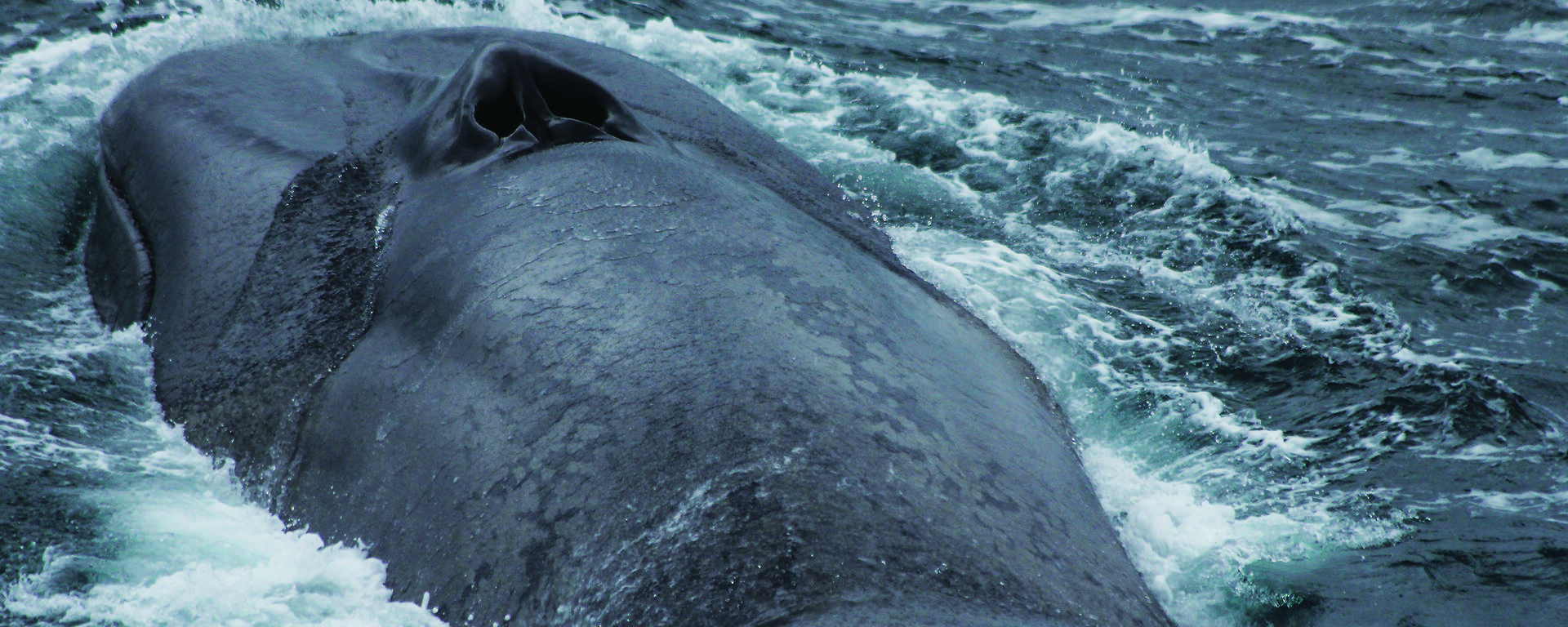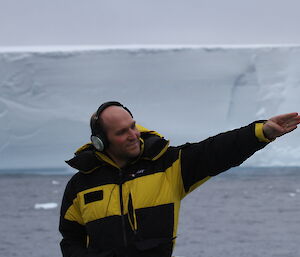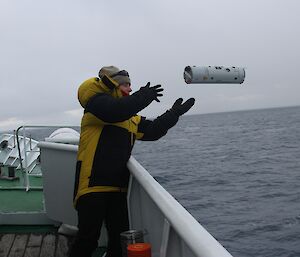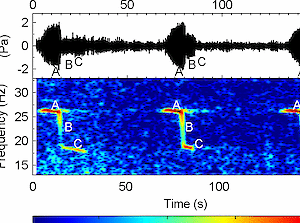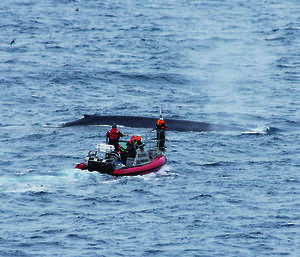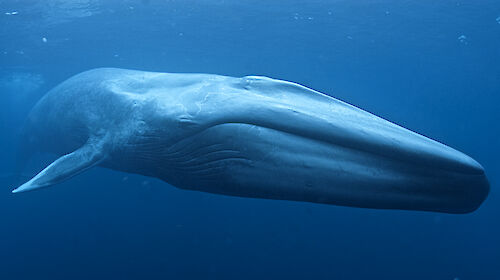The researchers used directional sonobouys to listen for the whales’ distinctive songs and calls across a 9,300 km survey area.
They identified seven areas of high acoustic activity where they were able to visually sight 84 Antarctic blue whales, take 50 photo identifications, collect 23 biopsy samples for genetic analysis and deploy two satellite tags.
Antarctic Blue Whale Project leader, Dr Mike Double, said that the whales were clustered together into distinct regions, generating an intense source of low-frequency calls.
“We encountered seven distinct hotspots for blue whales in our survey area and some of these were detectable from 600 nautical miles (1,100 kilometres) away,” Dr Double said.
“There was a steady increase in the intensity of song and other vocalisations as we approached these regions, which suggests that these acoustic hotspots may persist for several days, even if individual whales within them may change.
“This means that targeting acoustic hotspots, even from long distances, is a reliable method for encountering Antarctic blue whales.”
The research, led by the Australian Antarctic Division and published recently in Endangered Species Research, was conducted during a seven week voyage to the Southern Ocean in 2013.
Australian Antarctic Division acoustician, Dr Brian Miller, was part of the 18-strong team of observers, cetacean biologists and acousticians.
“Antarctic blue whales have very loud, low frequency songs that are distinctive from other populations of blue whales,” Dr Miller said.
“Initially we deployed single sonobuoys to establish the direction of the sound, and then as we got closer and the intensity of the sound increased, we deployed multiple sonobuoys to triangulate the whales’ position.
“This method allowed us to locate whales to within a few kilometres – close enough for our observers to visually sight them.”
Antarctic blue whales were hunted to the brink of extinction during industrial whaling, and sightings have been extremely rare in the past 50 years. Between 1978 and 2010 blue whale surveys recorded only 216 visual encounters.
The researchers are hopeful their work has demonstrated a new blueprint for future studies of Antarctic blue whales.
“Acoustic tracking allows for a fundamentally different kind of survey than those of the past,” Dr Double said.
“It provides a way to stay with a group of whales for as long as they continue vocalising, allowing sampling of as many individuals within a group as possible, and providing time to study their behaviour and ecological linkages.”
The voyage was part of the Australian Government’s ongoing commitment to the International Whaling Commission’s Southern Ocean Research Partnership. The Partnership aims to develop, test and implement non-lethal scientific methods to estimate the abundance and distribution of whales and describe their role in the Antarctic ecosystem.
Members of the blue whale team are currently undertaking further acoustic research onboard New Zealand’s vessel Tangaroa, as part of a 6 week voyage to study humpback and blue whales and Antarctic toothfish. (Read more about the current New Zealand-Australia Antarctic Ecosystems Voyage and follow the voyage blog. Voyage sitreps are also available)

